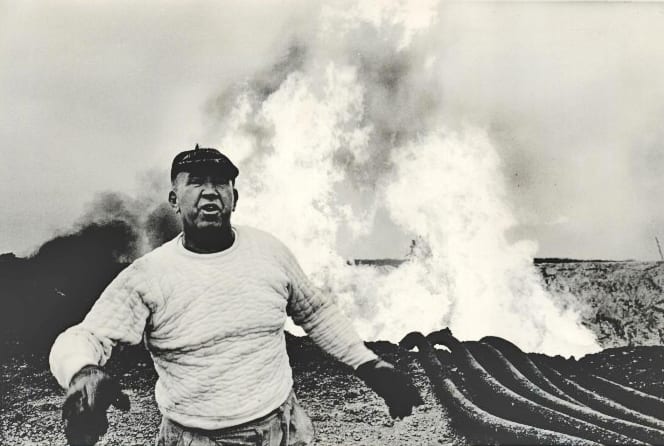Challenges In the early days of the oil field, blowouts were common, but there were no well control companies around to handle them. Thousands of lives were lost as oil companies struggled to handle dangerous blowouts without the benefits of modern-day well control practices. Then Myron Kinley arrived on the scene and saved the day. Kinley, who is considered to be the father of the modern well control industry, developed sorely needed well control methods and technologies that saved countless lives.
Born in California in 1898, Kinley grew up around the oil field. His father, Karl T. Kinley, was a torpedo shooter. Torpedo shooters dropped explosive nitroglycerin canisters, called torpedoes, down the well to fracture the rock and induce flow. In 1913, Kinley’s father was sent to Bakersfield, California, to blow a valve off a well that was blowing out. It was common practice in those days to blow valves off of oil wells so the blowout and fire would erupt straight up. With the well blowing straight up, the job of putting out the fire with dirt and water was made easier.
The resultant explosion blew the valve off the blowout well, but also unexpectedly put out the fire. The explosion had used up all the nearby oxygen and snuffed out the fire, which reignited a few minutes later. No one thought much of the fire going out except for 14-year-old Kinley, who had accompanied his father that day to the well.
Putting out oil well fires with dirt and water didn’t always work. In 1924, Kinley watched an oil company in Cromwell, Oklahoma; attempt unsuccessfully to put out a very large oil well fire. After watching 12 days of attempts, Kinley offered to put the fire out in just two days for a sum of USD 500. Utilizing knowledge learned a decade earlier, Kinley used explosives to snuff out the fire.
Kinley would go on to use his method of using explosives to put out oil well fires to start the fledgling well control industry. He did not stop there, however, and, over the years, Kinley developed many more well control methods and technologies.
Kinley developed the asbestos proximity firefighting suit in the 1930s. While this suit was developed to protect well control specialists from the extreme heat experienced when approaching oil well fires, Kinley’s suit didn’t take hold in the well control industry because of the development of the Athey wagon, which allowed for rig removal work from a distance, and the practice of putting water on men and equipment to keep them cool. However, the proximity firefighting suit did take hold with firefighters and is still in use today (using materials other than asbestos).
Kinley, tired of placing explosives next to a well fire by hand and running away before they exploded, went on to convert the Athey wagon for safer explosives placement. The Athey wagon is an A-frame trailer with a long boom and hook on the end that is moved into place with a bulldozer. The Athey wagon was already in use in the lumber industry and also as a ship-moving vehicle. Kinley initially used the Athey wagon to place explosives safely and exactly where they needed to be for best effect. He later found more uses for it, such as debris removal or well capping. Today, it is also used as a platform for abrasive jet cutting.
After trying many different materials for use as heat barriers, Kinley discovered that corrugated tin works best for reflecting heat from a fire. Corrugated tin is both lightweight and readily available. It sounds like a mundane discovery, but the adoption of corrugated tin allowed for a wide variety of close-in well control techniques that kept men and equipment from incinerating.
Kinley went on his first offshore blowout job in 1936 in Lake Maracaibo, Venezuela. Because the rig had collapsed into the water, none of the standard dry-land well control procedures in Kinley’s arsenal were applicable. He spudded a well 600 feet (183 meters) from the blazing inferno and drilled a slant hole that intersected the blowout well hundreds of feet beneath the surface of the lake. The mud from Kinley’s well u-tubed into the blowout well and stopped the blowout, while pumps on the rig desperately tried to make up for the lost mud. Unbeknownst to Kinley, he had drilled the first relief well without the benefit of modern-day directional and ranging technologies!
Since the beginning of the well control industry, well capping involved well control specialists using hacksaws to cut casing by hand. Cutting casing allowed well cappers to install a Christmas tree or capping stack on top of the blowout well. This time-consuming operation had to be undertaken under a deluge of water since any spark might reignite the oil well fire. To make it easier and safer to cut casing, Kinley developed the sandline cutter, a sand-resin-coated cable that was hooked around the wellhead and was pulled back and forth with wenches. The abrasive action of the sand-resin-coated cable would cut the wellhead off cleanly, thus allowing for the well to be capped and shut in.
Throughout his career, Kinley developed new ideas to save time, money, and lives. Besides the well control techniques and inventions he developed, Kinley submitted dozens of patents for use in normal oilfield operations. Some of his patents most commonly used today include the finger caliper and tubing punch.
More than 39 years after his death, Kinley’s legacy is still present in Boots & Coots operations. Besides all of his well control methods and technologies that Boots & Coots still utilizes, the very namesakes of the company – Asger “Boots” Hansen and Ed “Coots” Matthews – trained under Kinley. Hansen began working for Kinley as an assistant in 1951. Matthews joined Kinley in 1958. Hansen and Matthews founded the Boots & Coots well control company decades later in 1978.
Source: Halliburton




